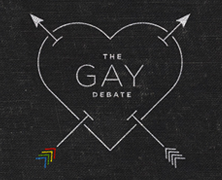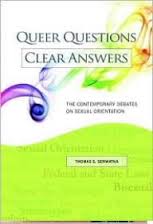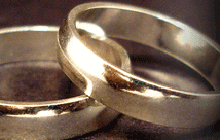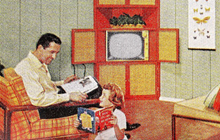One specific claim by social conservatives that is sometimes decried as “hateful” is the charge that, in proportion to their numbers, homosexual men are more likely to engage in child sexual abuse than are heterosexual men.
It is important to understand what social conservatives who make this claim are not saying. Social conservatives are not saying that all homosexuals are child molesters (or even all homosexual men, since child sexual abuse, whether of boys or girls, is committed mostly by males); they are not saying that most homosexual men are child molesters; and they are not saying that most child sexual abuse is committed by homosexuals.
Social conservatives believe the evidence shows, however, that relative to the size of their population, homosexual men are more likely to engage in child sexual abuse than are heterosexual men. It is neither reasonable nor responsible to simply dismiss this assertion – it is necessary to examine the evidence for and against it.[i]
The first key fact to understand is this – the percentage of all cases of child sexual abuse which involve a male offender and a male victim is far higher than the percentage of adult males who are “homosexual” by any of the three measures of sexual orientation (attractions, behavior, or self-identification). To put it differently, the prevalence of what is, by definition, “homosexual” (that is, same-sex) child sexual abuse is much higher (in percentage terms, not in absolute terms) than the prevalence of adult homosexuality per se. This fact is not in dispute among researchers on either child sexual abuse or homosexuality.[ii]
However, homosexual activists, and many researchers in the field, avoid the apparent implications of this by insisting that most men who molest boys are not “homosexual” (or “gay”) in terms of their relationship to other adults.
This claim, however, cannot merely be asserted – it must be supported by empirical evidence. The evidence usually cited as disproving the link between homosexuality and child sexual abuse is quite weak,[iii] while several lines of evidence tend to support the conclusion that a link exists. For example, a study published in the Archives of Sexual Behavior found that “eighty-six percent of [male] offenders against males described themselves as homosexual or bisexual.”[iv]
In addition, those who challenge the thesis that there is a link between homosexuality and child sexual abuse often resort to narrow definitions of both concepts. For example, they may refuse to identify a molester as homosexual unless he has always been exclusively homosexual on all three measures of sexual orientation – attractions, behavior, and self-identification.
Some also attempt to replace the broader term “child sexual abuse” with the specific word “pedophilia,” and then define “pedophilia” narrowly to include only sexual contact with very young, prepubescent children. This narrowing of categories makes it easier to deny that “homosexuals are more likely to be pedophiles,” because there is indeed evidence that men who molest under-age males tend to prefer adolescents rather than young, prepubescent children.[v] FRC’s view is that any sexual contact between adults and minors is a subject for concern, and any which violates state statutory rape laws should be considered “child sexual abuse.”
The final piece of evidence for a link between homosexuality and child sexual abuse comes from the homosexual community itself. In 2002, lesbian writer Paula Martinac put it this way:
“…[S]ome gay men still maintain that an adult who has same-sex relations with someone under the legal age of consent is on some level doing the kid a favor…[A]dult-youth sex is viewed as an important aspect of gay culture….This romanticized vision of adult-youth sexual relations has been a staple of gay literature and has made appearances, too, in gay-themed films….The lesbian and gay community will never be successful in fighting the pedophile stereotype until we all stop condoning sex with young people.”[vi]
The reasons for the disproportionately high rates of male-on-male child sexual abuse, and the exact relationship between homosexuality and child sexual abuse, are worthy of further research and subject to legitimate debate. People have every right to disagree with or challenge the conclusions that are drawn from the available evidence – but what appears to now be happening is an attempt to cut off this important debate altogether.
[i] For more details, see: Peter Sprigg and Timothy Dailey, co-editors, “Chapter 6: Is There a Link Between Homosexuality and Child Sexual Abuse?” Getting It Straight: What the Research Shows About Homosexuality (Washington, DC: Family Research Council, 2004), pp. 121-142. Online at: http://downloads.frc.org/EF/EF08L46.pdf.
[ii] For example, an article in the Journal of Sex & Marital Therapy reported that “investigations have indicated that the ratio of [male] sex offenders against female children vs. offenders against male children is approximately 2:1, while the ratio of gynephiles [heterosexual men] to androphiles [homosexual men] among the general population is approximately 20:1” Kurt Freund and Robin J. Watson, “The Proportions of Homosexual Pedophiles Among Sex Offenders Against Children: An Exploratory Study,” Journal of Sex & Marital Therapy Vol. 18, No. 1 (Spring 1992), p. 34.
[iii] For example, those who deny a link between homosexuality and child sexual abuse often cite a study in the journal Pediatrics in which only 2 out of 269 child victims were identified as having been molested by someone identified as a known homosexual. However, this study merely inferred the sexual orientation of the molesters from information on medical charts obtained from those who brought the children in for medical care – a methodology of questionable value. The molesters themselves were not interviewed. Even in this study, 22 percent of the victims were molested by a person of the same sex. Carole Jenny, Thomas A. Roesler, Kimberly L. Poyer, “Are Children at Risk for Sexual Abuse by Homosexuals?” Pediatrics Vol. 94, No. 1 (July 1994), pp. 41-44.
[iv] W.D. Erickson, “Behavior Patterns of Child Molesters,” Archives of Sexual Behavior 17 (1988): 83.
[v] For example, a review of the research by a Canadian psychiatric journal found, “In heterosexual pedophilia the majority of victims fall between the ages of 6 and 12 years. In homosexual pedophilia, the number of victims increases into puberty and the post puberty period resulting in a statistical overlap with adult homosexuality.” John M.W. Bradford, D. Bloomberg, D. Bourget, “The Heterogeneity/Homogeneity of Pedophilia,” Psychiatric Journal of the University of Ottawa Vol. 13, No. 4 (December 1988), p. 217.
[vi] Paula Martinac, “Do We Condone Pedophilia,” PlanetOut.com, February 27, 2002.









